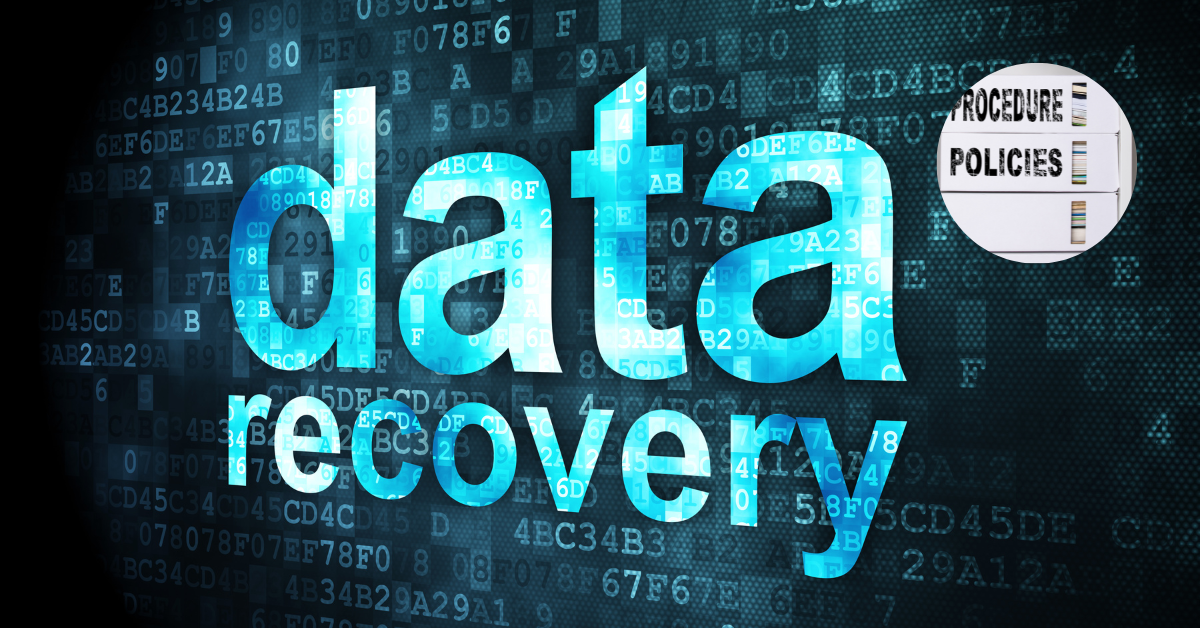Here’s how you can write an Audit, Data Recovery, and E-Security Policy:
- Define the Purpose: Understand the needs and objectives of the policies.
- Consult Stakeholders: Involve individuals affected by or involved in implementing these policies.
- Draft the Policy: Write a draft including the introduction, procedures, responsibilities, and review processes.
- For an Audit Policy, understand the organization, identify audit areas, set objectives, and develop audit procedures.
- For a Data Recovery Policy, identify critical data, define backup and recovery procedures, and set recovery objectives.
- For an E-Security Policy, understand security risks, define security measures, set objectives, and develop security procedures.
- Review and Edit: Revise the draft based on stakeholder feedback and organizational needs.
- Implement and Communicate: Introduce the policy to the organization, offer necessary training, and ensure it’s adhered to.
- Review Periodically: Update the policy regularly to keep it relevant and effective.
Remember, clarity, consistency, communication, and adaptability are key for successful policy implementation. Avoid ambiguity, lack of communication, inadequate training, and lack of review.
Hey there, friend! Have you ever found yourself in a situation where you needed to write an audit, data recovery, or e-security policy and didn’t know where to start? Well, you’re not alone. It can be daunting, but don’t worry; I’m here to help you navigate it.
Understanding the Concepts
First, let’s break down these concepts.
Audit
An audit objectively examines an organization’s financial reports or operational processes to ensure accuracy and compliance with regulations, standards, and guidelines.
Data Recovery
On the other hand, data recovery is a process of retrieving inaccessible, lost, or corrupted data from storage media when it cannot be accessed normally.
E-Security
E-security, or electronic security, is defending information and other assets by mitigating electronic threats and vulnerabilities.
Importance of Policies
Policies play a vital role in the functioning of an organization.
Audit Policies
Audit policies help maintain transparency, ensure financial integrity, and enhance accountability in an organization.
Data recovery policies provide a roadmap for dealing with data loss scenarios, ensuring business continuity, and reducing downtime.
E-Security Policies
E-security policies are essential for safeguarding an organization’s information assets, preventing cyber threats, and maintaining trust with customers and partners.
Steps to Write a Policy

Now that we have a basic understanding of these concepts let’s dive into the steps of writing a policy.
Step 1: Define Purpose
Every policy begins with a purpose. What are you trying to achieve? What problem are you addressing?
Step 2: Consult Stakeholders
Involve all the stakeholders in the policy development process. Their input can offer valuable insights and foster acceptance of the policy.
Step 3: Draft the Policy
Begin drafting the policy. This should include an introduction, purpose, procedures, roles and responsibilities, and review processes.
Step 4: Review and Edit
Review and revise your draft, taking into consideration feedback from stakeholders.
Step 5: Implement and Communicate
Finally, implement the policy and communicate it effectively to all stakeholders. Training and education may be necessary for effective implementation.
Crafting an Audit Policy
Understand the Organization
Get a firm understanding of your organization’s structure, operations, and internal control systems.
Identify Audit Areas
Identify the areas that need auditing based on their risk and significance to the organization.
Set Audit Objectives
Set clear objectives for each audit area. What are you trying to find out?
Develop Audit Procedures
Establish procedures for the audit, including the tools and methodologies to be used.
Creating a Data Recovery Policy

Identify Critical Data
Identify the data that is critical to the organization’s operations and cannot afford to be lost.
Define Backup Procedures
Specify how often data backups should be performed and where they should be stored.
Set Recovery Objectives
Establish the recovery time objectives (RTO) and recovery point objectives (RPO).
Develop Recovery Procedures
Outline the steps to be taken in case of data loss, including who is responsible for what.
Developing an E-Security Policy
Understand Security Risks
Conduct a risk assessment to understand your organization’s exposure to electronic threats.
Define Security Measures
Identify the security measures that must be implemented to safeguard your organization’s information assets.
Set Security Objectives
What are the goals of your e-security policy? This could be anything from protecting customer data to ensuring uninterrupted service.
Develop Security Procedures
Establish procedures for managing security risks, including the roles and responsibilities of staff and management.
Key Elements of a Successful Policy
Every successful policy shares some key elements.
Clarity
The policy should be clear and easy to understand. Avoid jargon and complex language.
Consistency
The policy should be consistent with other organizational policies and goals.
Communication
Effective communication of the policy is critical. Everyone should know what the policy is and why it exists.
Adaptability
Policies should be flexible and adaptable to organizational or environmental changes.
Common Mistakes to Avoid

Here are some common pitfalls to avoid when writing a policy.
Ambiguity
Avoid vague language. Be clear and specific about what is expected.
Lack of Communication
Ensure the policy is effectively communicated to all stakeholders. This includes regular training and reminders.
Inadequate Training
Don’t assume that everyone knows how to follow the policy. Provide adequate training and support.
Lack of Review
Policies should be regularly reviewed and updated to remain relevant and effective.
FAQs
Why is it important to have an audit, data recovery, and e-security policy?
Having these policies ensures that your organization maintains financial integrity, prevents data loss, and safeguards against electronic threats.
What is the role of stakeholders in policy development?
Stakeholders provide valuable input during the policy development process, and their acceptance of the policy can lead to successful implementation.
What is a risk assessment in e-security policy development?
A risk assessment is a process of identifying, analyzing, and evaluating risks that could potentially impact an organization’s information assets.
How often should policies be reviewed and updated?
Policies should ideally be reviewed and updated annually or whenever significant changes occur in the organization or its environment.
What are RTO and RPO in data recovery policy?
Recovery Time Objective (RTO) is the maximum tolerable time a computer, system, network, or application can be down after a failure. Recovery Point Objective (RPO) is the maximum tolerable amount of data loss measured in time.
Conclusion
Creating a policy, whether it’s for audit, data recovery, or e-security, is no small feat. But it can be a manageable task with the right approach and a clear understanding of the underlying concepts. The key is to be clear, involve all stakeholders, align with organizational objectives, and avoid common pitfalls. So, take a deep breath and get started!
